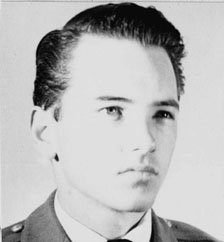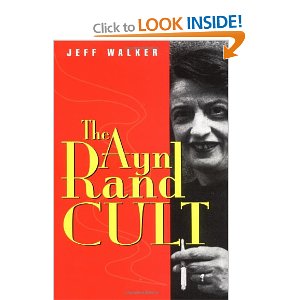
Tom Porter, 1942-2008
[reviewed by Carlos W. Porter for amazon.com] [long version, with personal comments]
AYN RAND'S THEORY OF KNOWLEDGE by Tom Porter
[This may be a bit confusing. My older brother, Tom Porter, now deceased, wrote a book, which I, Carlos Porter, reviewed, quoting another review by a person named Carolyn T. Ray, a philosophy PhD. So there are two Porters.]

Tom Porter, 1942-2008
[reviewed by Carlos W. Porter for amazon.com] [long version, with personal comments]
NEW EXTREME SPORT: HORIZONTAL-VERTICAL TENNIS
This book has been devastatingly reviewed by Carolyn Ray, with reply by author Porter and second thoughts by Ray, see:
Porter's Rand: A Commentary - Carolyn Ray
http://www.aynrandstudies.com/jars/archives/jars3-1/jars3_1cray.pdf
Reply to Carolyn Ray: How Not to Read a Book - Tom Porter
http://www.aynrandstudies.com/jars/archives/jars4-2/jars4_2tporter.pdf
Rejoinder to Tom Porter: Second Thoughts - Carolyn Ray
http://www.aynrandstudies.com/jars/archives/jars4-2/jars4_2cray.pdf
On why the above links are broken:
see bottom of the present page
Perhaps fewer people would buy this book if they had any idea what they are letting themselves in for.
(IOE = Introduction to Objectivist Epistemology
(ARTOK = Ayn Rand's Theory of Knowledge)
The following are a few samples only:
INTRODUCTION by Tom Porter (immediately after telling us that the book was rejected by no fewer than 71 publishers, some of them several times):
[Text] I've numbered IOE's paragraphs: the first digit identifies the chapter (F, 1-8, or S), the next two the position within that chapter: "203" means the third paragraph of chapter two, and 223 is the twenty third.
[Footnote] I've omitted the place-holding zero for the Foreword and the Summary. F4 is the fourth paragraph of the Foreword.
[Text] And I've numbered sentences within a paragraph by decimals: 815.1 is the first sentence of 815
[Footnote] It's just .1, if I'm already discussing 815.
[Text] There will be many references to paragraphs previously discussed; you must add these paragraph numbers in Ayn Rand's margin as we proceed.
[Footnote] Don't try to number them before we begin. You'll miss a one-line paragraph or double-count one that continues on the next page ...]
MY COMMENT: Of course, you'll have to photocopy both books, since they do not lie flat. What's the matter with ordinary references (for example, page 37, paragraph 3, lines 3-5, edition so and so)?
Another disadvantage to this system is that if author Tom Porter includes a reference to Chapter 8 in a footnote to Chapter 2, you will be unable to find the passage in Chapter 8 until the second time you read the book (if at all, assuming you didn't number incorrectly). This is a lot of work for just another over-complicated discussion of all the clichés of philosophical textbooks (black swans, tables and tableness, etc.), for 376 pages.
To me, this is like a modern artist insisting that his paintings can only be appreciated if you stand on your head; your refusal to do so naturally proves that you are a Philistine and that the artist is an unappreciated genius.
On the other hand, if you really LIKE the idea of constantly bobbing your head from side to side, horizontally, from one book to another, both of them open in front of you at all times (remember, you'll have to photocopy both books, since they do not lie flat) then bobbing it up and down, vertically, while the author hops up and down between dubious text and almost incomprehensible footnotes, then this book will be just your cup of tea.
Now to the fun part.
Here, cited by Ray, is a sample paragraph from Ayn Rand:
`Just as the concept "man" does not consist merely of "rational faculty" (if it did, the two would be equivalent and interchangeable, which they are not), but includes all the characteristics of "man", with "rational faculty" serving as the distinguishing characteristic -- so, in the case of wider concepts, the concept "animal" does not consist merely of "consciousness and locomotion", but subsumes all the characteristics of all the animal species, with "consciousness and locomotion" serving as the distinguishing characteristic' (Introduction to Objectivist Epistemology, Ayn Rand, 1990, p. 27).
The following "analysis", with multitudinous footnotes, is by author Porter:
[Text] Smoke is only a sign of fire to people who know about fire. The relation of the symbol to the thing is an abstraction from the relation of knowledge to its object. The symbol stands for the thing in our knowledge.
[Footnote] Does that mean I can't symbolize the unknown? But I just did. I had to know something about it (e.g., that it's unknown), not everything; in order to symbolize everything about it. Abstractly.
[Text] The first symbol is awareness of reality. If the concept is a symbol of the thing (240-1), then it symbolizes, means, denotes, includes and subsumes all characteristics of the thing, including unknown characteristics. If it symbolizes two things, it symbolizes their differences as well as their similarities.
[Footnote] What about negative concepts? They're surely needed (Furth 1968). How might they avoid this error? Perhaps by contextual scope. "Non-living" is wider than "non-avarian" because, in real contexts, all non-birds are animals. Or they're all flying things, or all singing things. Real contexts are commensurable (217) (Ayn Rand's Theory of Knowledge, Porter, p. 89).
Can you understand this? Ray suggests that the author needed an editor. To my mind, what he really needed was a translator. For example:
ORIGINAL TEXT BY PORTER:
"Does that mean I can't symbolize the unknown? But I just did."
TRANSLATION INTO ORDINARY ENGLISH:
"This does not mean that we cannot symbolize the unknown."
ORIGINAL TEXT BY PORTER:
"What about negative concepts? They're surely needed (Furth 1968). How might they avoid this error?"
TRANSLATION INTO ORDINARY ENGLISH:
"There is also a need for negative concepts (Furth 1968, page so and so). Negative concepts might avoid this error", etc.] [What error? What the hell is he talking about?], etc.
The reviewer, Carolyn Ray, a philosophy Ph.D.(Journal of Ayn Rand Studies 3, no. 1 (Fall 2001): 117-24),then remarks:
"One might wonder in any case why a book that consists of nothing but annotations warrants any footnotes at all...Given that Porter's book is, in effect, a set of footnotes to IOE, footnotes to his own footnotes are an unnecessary level of complication... Indeed, they are an indication of the fact that he does not realize just how disjointed his own discussion is.
"Note well that the reference to Rand, above, is not provided by Porter. And since I was not inclined to number all the paragraphs in IOE, it was necessary for me to count 33 paragraphs from the beginning of chapter 3 to find the reference (I still did not get it right until I counted backwards from the end). Yet, because there is no identifying reference in Porter to indicate that I did, indeed, find the right paragraph, and no clear connection between his comment and Rand's paragraph, I am left with a vague feeling, even after counting twice and rereading several times, that I did not in fact find the quote to which he refers..." (Journal of Ayn Rand Studies 3, no. 1 (Fall 2001): 117-24).
To me, the book is the power trip of a megalomaniac. The reader is made to jump through hoops to enhance the self-importance of the writer.
The author of the book was an ex-Green Beret (Laos 1962), an independent trucker, qualified ship's radio operator, and amateur herpetologist, with a good knowledge of zoology, electronics and law; but he was never a good writer.
PERSONAL COMMENTS
There is something grotesque about the spectacle of sociopathic, childless, child-hating, child-killing abortion fanatics like Ayn Rand and Tom Porter writing complex books about some imaginary entity called “the child” and how it engages in something called the “integration of percepts”, along with a whole host of other things the Objectivists know nothing about, such as “savages” and “mystics”. Are they child psychologists? Neurologists? Anthropologists? Explorers of the Upper Amazon? Biographers of the great religious thinkers? Did they ever have any children? No, they know nothing. It’s all just made up out of their own minds; a form of mysticism. If Dr Oliver Sacks wrote a book on the subject (in fact, he has written about half a dozen, but they are not classified as “philosophy”), it might have some authority. But Ayn Rand? Tom Porter?
On June 25, 1945, in a beach house in Emerald Bay, California, 3 days after his 3rd birthday, and 8 days after the first birthday of a new baby -- a beautiful, healthy, happy, easy child -- Tom was jealous of the baby, so he pushed him off the bed and killed him. He didn’t die in the fall; he strangled to death in his bedding. He was restrained in some manner. If Mom had seen it, the baby wouldn’t have died; she could have saved him. If Tom hadn’t said anything, she probably wouldn’t have known for sure that he had been pushed. I think Tom pushed him on impulse, saw that he was in trouble, and ran for help, but it was too late.
Mom was unable to contact Pop with the news for many months, because he was off in the Pacific getting transferred around, so her letters kept getting forwarded around all over the place and returned to her, while she was stuck alone with Tom for months. She never really recovered from this, and neither did the family. This one catastrophic “accident”, in the long run, destroyed the family, producing endless ripple effects that will, in all probability, only cease with the death of the last brother, if then.
Mom never knew whether Pop forgave Tom or not. It wouldn’t have been easy to do. Tom destroyed the life of the family. Nothing was possible as long as he lived at home. So when I was growing up he was almost never there. He lived at our grandparents’ house for 5 years; they built a shed for him in the garden so he didn’t have to live in the house.
I can’t imagine any of my children pushing a baby off a bed -- they all loved the new babies. Of course, when they get a bit older and they’re playing together, they push each other all the time, and don’t think anything of it. We’ve all done dumb things -- I understand that -- even stupid, cruel, malicious things. Usually we’re lucky.
The point isn’t that Tom was a murderer, because he wasn’t. He was never particularly cruel or sadistic physically; he wasn’t a bully; he didn’t get in fights, he didn’t torture animals. But that’s not the point. The point is that he never really changed. He wasn’t malicious because of the “accident”; the “accident” happened because he was malicious -- extraordinarily malicious, jealous, spiteful and vindictive. He would cut off his nose to spite his face and hold a grudge until the crack of doom.
Tom’s weakness was intellectual vanity. If you flattered him, he turned on the charm and became almost a different person. In these moods he could be extremely generous, and would pay for absolutely everything. With Tom, no matter how obvious something was, if you thought of it, you were an “idiot”. You had to wait until he thought of it, or one of his beer-bar, pool-playing type pals, then you had to say (or allow him to imagine that you thought) “Gee, golly, Tom, that sure is smart!” Then he was Jolly Santa.
Perhaps this explains the fact that he always had 3 or 4 loyal friends, quite ordinary people: a few drifters, but no criminals or thieves. His treatment of anyone who failed to flatter him, by contrast, was unspeakably coarse, vile and abusive.
In 1966, he forced the only decent girl friend he ever had that I knew of -- a woman who really loved him -- to have an abortion in Mexico, after which she was unceremoniously dumped without a flicker of emotion; I suspect that this was the pattern of his life.
In the 70s, he bought a nice house in a decent neighbourhood and allowed it to deteriorate until it lowered property values for blocks around; his neighbours hated him.
Maintaining your property out of simple respect for your neighbours is, of course, “Altruism” and “Collectivism” and “Self-Sacrifice”, while local ordinances and zoning laws prohibiting people from creating an eyesore are “Mysticism”, “State-ism”, “Collectivism” and an “Initiation of the Use of Force”! Such is the so-called “Philosophy of Ayn Rand”. His neighbours must have been jumping for joy when he died, and I don’t imagine they were the only ones.
The crazy thing is, Tom knew what he had done; he had bad dreams about it. So why didn’t he change the way he treated people? Instead, he preached a “philosophy of reason” and went on treating people in exactly the same way.
Objectivism is hippie-ism for yuppies, beatnik-ism for squares. Tom hated the middle class. He wanted to destroy middle class values. Personally, he was very clean, he showered every day, but his living quarters – bed, kitchen, stove, refrigerator, everything -- were always unspeakably filthy, so you can imagine the quality of the women he attracted. I think he met most of them in beer bars. He never married and never had children. He had no empathy for women. He used them and dumped them. He was uncouth. He spoke like a fruit picker. He used bad grammar and deliberately mispronounced words, even when he was talking about philosophy. For example, “treatise” was always pronounced “treatsy”. Tom always had a very confusing way of expressing his ideas and I never knew him to explain something like a normal person. Who else would write a philosophy book in the jumpy, nervous, pseudo-tough guy talk of a cheap detective novel?
The last thing he ever said to me was “Ain't nobody never give me nuthin’ ”. The family did nothing but give to him and help him and forgive him and cover up for him for 30 or 40 years, for as long as he lived, in actual fact, but that was his attitude. Tom hated the family, but he took off it.
Speaking of “cover-ups”: the family was allowed to adopt another child about a year and half later. It should never have been permitted. The adopted brother was promptly made miserable; I got off lucky, simply because I wasn’t adopted.
So the upshot of it is, if it hadn’t been for Tom, I would have had another brother and at least one nephew someplace. Then one fine day -- lo and behold, will wonders never cease -- I wake up to find that my long-lost brother has written a whole book on “the child”, and how it “integrates percepts”!
There is a certain irony in this.

Thanks for being such a great brother to me, Tom -- you were a real kick in the ass.
-- Baby Billy
---
I gather that people like Tom are very common in the Objectivist movement. It attracts them, provides them with a brief oasis of calm (and self-justification) in the turmoil of their existence, then it makes them worse.

Best book on the phenomenon of Randopathy
De mortuis nil nisi veritas.
--
WHY THE ABOVE LINKS ARE BROKEN
[footnote *] The reason that most, or much, of Rand's complete works have not appeared in book form is because Objectivists are obsessed with money,
[see footnote * *], milking the goyim for every shekel they can get.
They are not disinterested seekers after truth. They are money-mad.
--
[footnote *] You know what happens (or used to happen) if you contact one of the Ayn Rand gang headquarters (there are two -- presumably equally "rational" -- Ayn Rand gangs, the Peikoff gang in California and the Chris Sciabarra gang in New York, rather like the Capone-Moran gangs or the Stalin-Trotsky split)?
They don't just sell you stuff to read; you get contacted by a "rep", who charges you some fantastic sum, then he visits you at your home with a tape recorder, plays a lecture for you ONCE, in your presence. You are permitted to take notes, but you are not permitted to listen to it again or record it!
(Source of information: The Ayn Rand Cult by Jeff Walker)
(Fortunately you can buy voice-activated recording devices that look like a USB memory stick, fountain pen, battery recharger or anything else, and will record everything said in a room for 16 or 32 hours; just look on amazon.)
--
[footnote * *] Objectivists are all Shylocks. Take the links in my review of my brother's book. I obtained all the files off the Internet; they looked like hell, like they'd been scanned during the Crimean War!
The rights were possessed by the Sciabarra gang. They would not permit me to retype them so they looked good; they insisted I could only link to them.
Then they LOCKED THE FILES (3 of them, the 3rd of them being only 5 or 6 lines long, 2 or 3 sentences at most). To read them, you had to pay 5 dollars, per file, by credit card! Then, since not enough suckers were willing to do that, they broke the links!
Gone forever are Carolyn T. Ray's brilliant dissection of Brother Tom's book (about 10 pages long; Brother Tom's vitriolic reply (about 10 pages long); and Ray's final riposte, saying, more or less, that the only way she wrote the way she did was because she was giving my brother the benefit of the doubt, assuming that he simply did not realize how disjointed his discussion really was!
"That benefit of the doubt is hereby withdrawn", she said.
Period. End of discussion. For this measly little file they wanted 5 jewbuckniks!
See also:
Philosophical Index